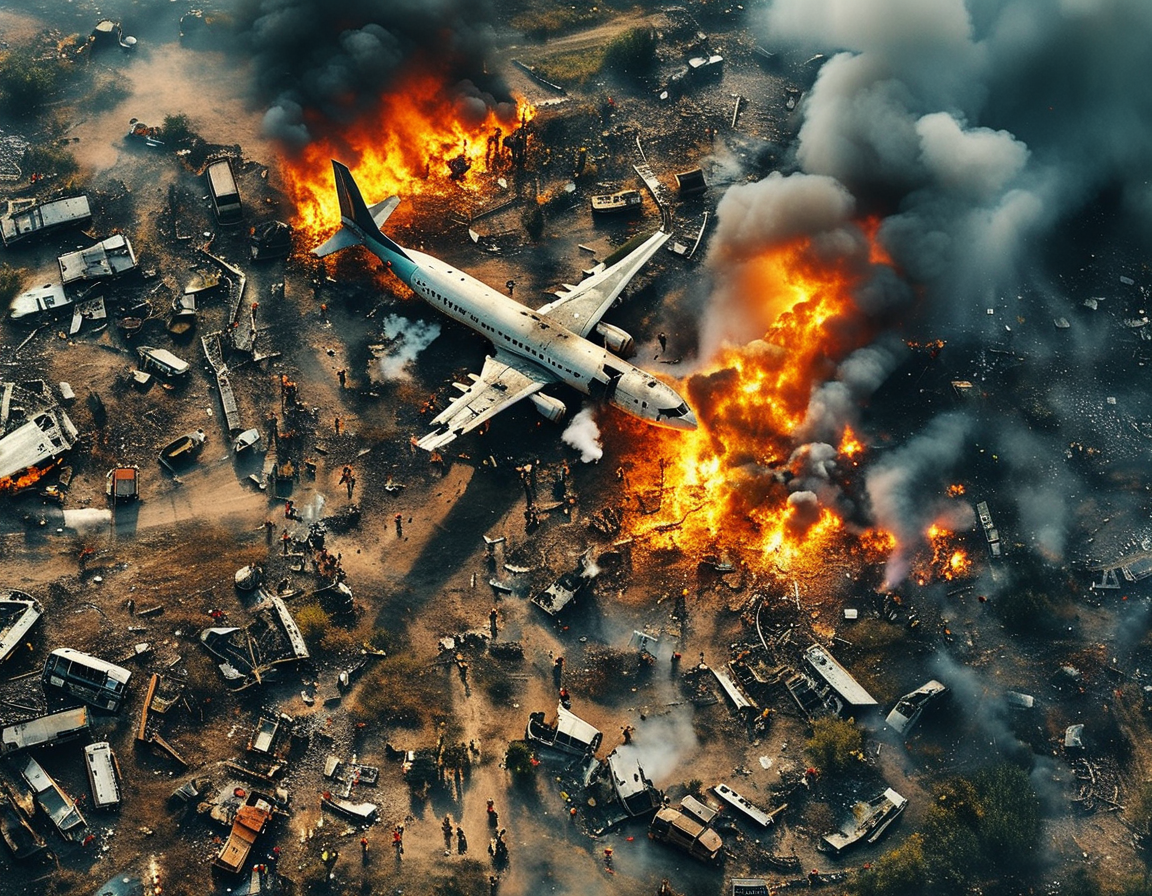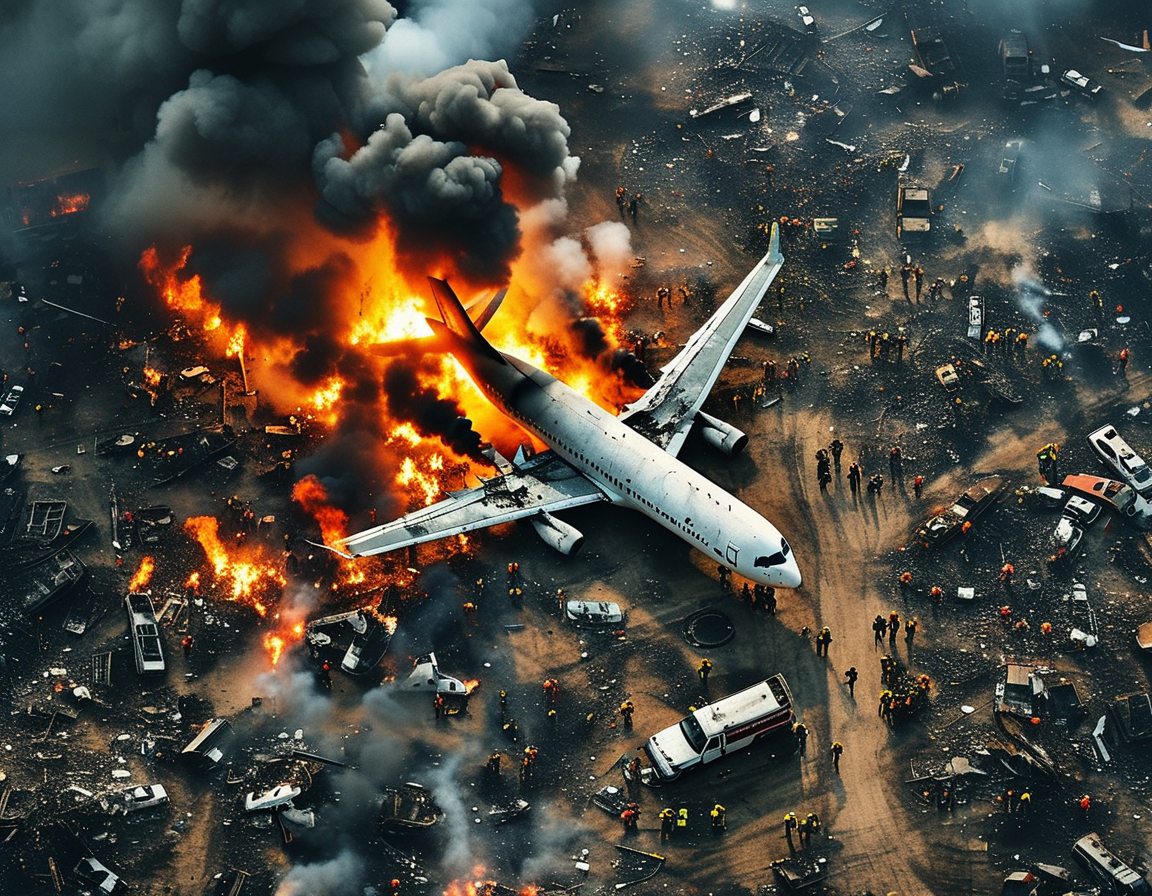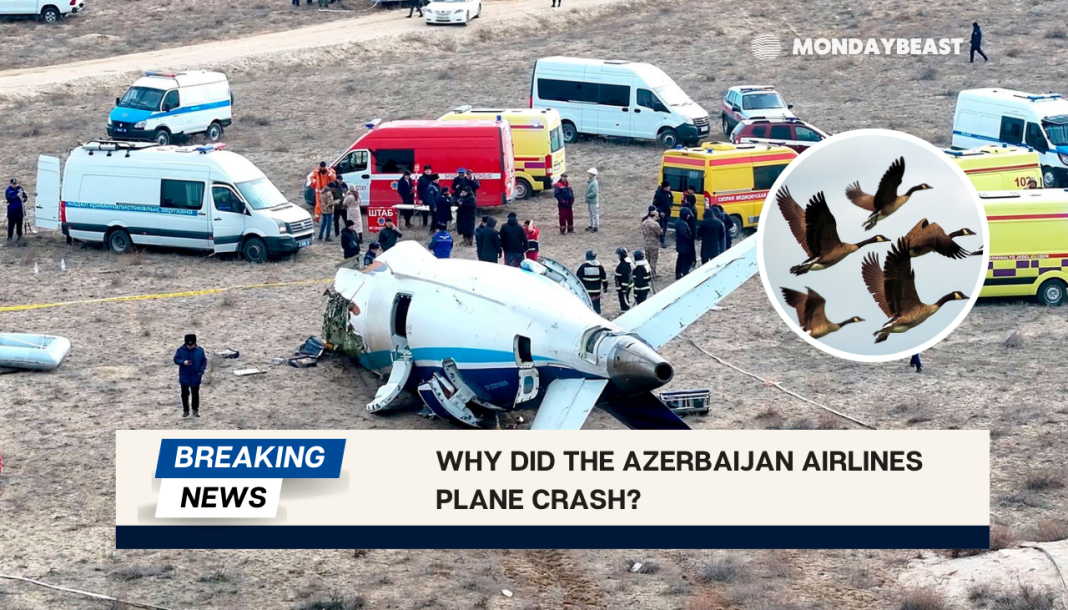The aftermath of the recent plane crash in Kazakhstan leaves many questions. How did a routine flight descend into chaos, resulting in a fireball? With investigators on the scene, the world waits for answers.

Kazakh authorities are probing various causes. Reports suggest a technical malfunction could be at fault. But what really happened as the aircraft approached Aktau? Eyewitness accounts flood social media platforms. Some describe the plane making a sudden, steep descent.
Footage of the crash shows a terrifying scene. Flames engulf the wreckage as emergency crews scramble. The sight of twisted metal and smoke is haunting. Among the rubble, survivors emerge, some struggling to pull fellow passengers to safety. It’s a poignant reminder of human resilience.

The flight’s last moments remain unclear. Data from FlightRadar24 shows the aircraft’s altitude fluctuating erratically. What caused this? Speculation arises about jamming of GPS signals in the region. Similar incidents have pointed to external interference before.
The plane’s manufacturer, Embraer, has not commented yet. Meanwhile, Azerbaijan Airlines is in the spotlight. The airline vows transparency, adjusting its social media presence to reflect the somber situation. Why is this crucial for public trust?

Ultimately, this tragedy pulls at our heartstrings. Could more have been done to prevent it? Families will now look for answers. Questions linger in the air—what led to this harrowing event? And how can we ensure such tragedies never happen again?
This incident reminds us of life’s unpredictability. As we sift through the footage and reports, one thing stands out: the power of human connection amidst despair. Each survivor’s story becomes a testament to courage in the face of unimaginable horror.
As investigators dig deeper into the causes, we must hold onto hope. Future flights depend on lessons learned from this unfortunate disaster. In the end, healing will take time, as will understanding this complex tragedy.




